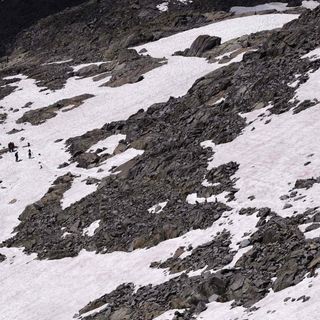A recent study has estimated a marginal decrease — 0.72% — in the snow cover of Himalayan rivers originating in Himachal Pradesh owing to climate change. Although the decrease seems little, it has the potential to affect runoff patterns — water that flows over land instead of being absorbed as groundwater or evaporating — during the summers, researchers said.
The report, released by the State Centre on Climate Change, Himachal Pradesh Council for Science Technology and Environment (HIMCOSTE), said the analysis, aimed at assessing snow cover in the region between October 2019 and May 2020, has shown that it shrunk by 146.23 sq km compared to the same period the year before.
One third of Himachal Pradesh remains under a thick snow cover during winter. Major rivers, such as Chenab, Beas, Parvati, Baspa, Spiti, Ravi, Satluj and their perennial tributaries that originate in the Himalayas, depend on this seasonal snow cover for the amount of water they discharge during the summer months.
However, the report stated, in the months between October and March — when the region receives heavy winter snowfall — the basins of these rivers recorded less snowfall this year, indicating that winter precipitation has declined in the winter months. The researchers attributed the change to rising temperatures at rates disturbingly higher than the global average in this region.
Related on The Swaddle:
All the Arguments You Need: To Convince People That Individual Behavior Does Affect Climate Change
Any decrease in the amount of water these rivers can discharge has a direct bearing on India’s water security because Himalayan rivers account for nearly two-thirds of India’s national river flows. In fact, 43% of India’s population depends on the Ganga for their water needs.
In addition, stream runoff is an important component in the planning of micro and mini hydroelectric projects. Any change in its pattern also affects the type, quantity, quality, and stability of vegetation cover and, thereby, biodiversity. Small changes in water availability can also have drastic effects on agriculture and ultimately, the economics of a country.
Besides global warming, even human-led activities, such as the construction of dams and pollution, are among the biggest threats facing Himalayan rivers. According to a report by the International Centre for Integrated Mountain Development (Icimod), the first comprehensive assessment of Asia’s mountains and rivers, Himalayan glaciers are in retreat, and, given the present levels of carbon emissions, the area could lose as much as 90% of its snow and ice by 2100 affecting mountain communities and others that depend on its rivers for sustenance.
While the findings of the report focus on the need to preserve snow cover that feeds these vital Himalayan river ecosystems, they are also a stark reminder of how interconnected the geographies immediately impacted by climate change are to the human populations dependent on them.




